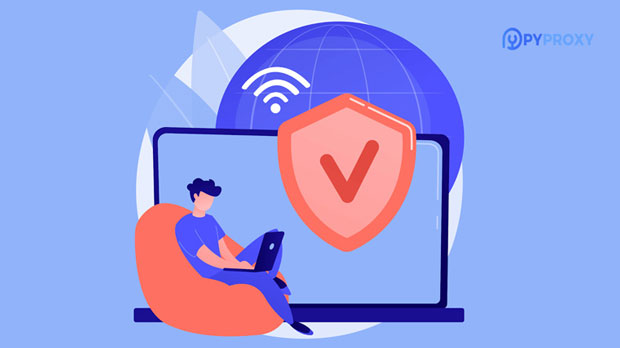Is it possible to bypass geo-restrictions by purchasing a SOCKS5 proxy?
In today's digital age, accessing content or services that are geographically restricted has become a common challenge for internet users. Geoblocking is often used by streaming services, websites, and even government institutions to limit access to specific content or websites based on a user's geographical location. One potential solution to bypass such restrictions is the use of proxies, specifically socks5 proxies. This article explores the effectiveness of SOCKS5 proxies in circumventing geographical restrictions, their functionality, and the associated benefits and limitations. We will delve into the technology behind SOCKS5, its advantages, and whether purchasing such a proxy can truly help you access region-restricted content without limitations. What is a socks5 proxy?A SOCKS5 proxy is a type of proxy server that operates at a lower level in the network stack, making it more flexible and versatile than other types of proxies. Unlike HTTP or HTTPS proxies, which specifically handle web traffic, SOCKS5 proxies can handle a wider range of protocols, including web browsing, email, FTP (File Transfer Protocol), and even online gaming. SOCKS5 is the latest version of the SOCKS protocol, and it offers improved security, better authentication mechanisms, and greater speed compared to its predecessors.SOCKS5 proxies work by acting as intermediaries between a user's device and the internet. When a user connects to a SOCKS5 proxy, their internet traffic is routed through the proxy server, which essentially masks their IP address and makes it appear as if they are located in a different region or country. This ability to change the user's apparent location is one of the primary reasons SOCKS5 proxies are often used to bypass geographical restrictions.How Does a SOCKS5 Proxy Help to Bypass Geographical Restrictions?Geographical restrictions are enforced using a method called "IP blocking," where websites or services identify a user's location based on their IP address. Websites and streaming platforms then restrict access to their content based on this geographical information. By using a SOCKS5 proxy, users can effectively "change" their IP address to one that corresponds to a region or country where the content is accessible.For example, if you are located in a country where a streaming service like Netflix, Hulu, or BBC iPlayer is unavailable, you can purchase a SOCKS5 proxy from a provider located in a country where the service is accessible. The proxy will route your traffic through the server in that region, making it appear as though you are browsing from that location and granting you access to the content.The Advantages of Using SOCKS5 Proxies for Geoblocking Circumvention1. Enhanced Privacy and Anonymity:One of the primary benefits of SOCKS5 proxies is their ability to provide greater privacy and anonymity. Unlike VPNs (Virtual Private Networks), which often encrypt your entire internet connection, SOCKS5 proxies only route specific types of traffic through the proxy server, which can result in faster speeds and less latency. This selective routing of traffic ensures that the user’s browsing activity remains more private and secure from third-party surveillance.2. Support for Various Protocols:SOCKS5 proxies are highly versatile and support a variety of protocols beyond just web traffic. This makes them suitable for activities such as online gaming, torrenting, and even accessing email services. For users who need to bypass georestrictions for purposes other than web browsing, SOCKS5 proxies offer significant advantages over traditional proxies that may be limited to specific protocols.3. Fast Connection Speed:SOCKS5 proxies tend to offer faster speeds compared to VPNs because they do not apply encryption to all internet traffic. This can be particularly useful for users looking to access high-bandwidth content, such as HD video streaming or large file downloads, without experiencing buffering or slow speeds.Limitations of Using SOCKS5 Proxies for Geoblocking Circumvention1. Limited Security Features:While SOCKS5 proxies offer privacy, they do not encrypt all of your internet traffic like a VPN would. This lack of encryption means that the user’s data can be exposed to malicious third parties, including hackers and internet service providers (ISPs). Users seeking strong security for sensitive activities, such as online banking or personal communications, might find SOCKS5 proxies insufficient in terms of privacy protection.2. Risk of Detection:Streaming services and websites that employ geoblocking techniques are often aware of the use of proxies to bypass restrictions. Some platforms are able to detect and block proxy traffic, particularly if they notice multiple users accessing the service from the same IP address or region. As a result, there is always a risk that a SOCKS5 proxy may be detected and blocked, making it an unreliable method for accessing content over the long term.3. Proxy Reliability and Quality:The effectiveness of a SOCKS5 proxy largely depends on the provider and the quality of their infrastructure. Not all proxy services offer the same level of performance, and some may provide slow speeds or unreliable connections. It is crucial to choose a reputable provider with high-quality servers located in regions where you want to access content. Additionally, some proxies may be oversold, leading to congestion and slower speeds.Comparing SOCKS5 Proxies with Other Methods of Geoblocking Circumvention1. VPNs vs. SOCKS5 Proxies:VPNs and SOCKS5 proxies are often compared when it comes to bypassing geographical restrictions. While both methods allow users to change their apparent location, there are key differences. VPNs encrypt all traffic, which adds a layer of security but can slow down connection speeds. SOCKS5 proxies, on the other hand, do not encrypt traffic, leading to faster speeds but less security. For users who prioritize speed over security, SOCKS5 proxies might be the better option. However, for users who require both security and the ability to bypass georestrictions, VPNs might be a more comprehensive solution.2. Smart DNS Services vs. SOCKS5 Proxies:Smart DNS services are another popular option for bypassing geoblocks. Unlike SOCKS5 proxies, Smart DNS services do not route all of the user’s internet traffic through a proxy server. Instead, they only reroute specific traffic related to the blocked content, such as streaming services. This can result in faster speeds, but Smart DNS services often do not provide the same level of privacy as SOCKS5 proxies or VPNs. Additionally, Smart DNS services are usually easier to detect and block by streaming services, which may make SOCKS5 proxies a more reliable long-term solution.Conclusion: Is a SOCKS5 Proxy Effective for Bypassing Georestrictions?Purchasing a SOCKS5 proxy can be an effective way to bypass geographical restrictions for certain types of content and services. By masking your IP address and routing your traffic through a server in a different location, you can access content that would otherwise be unavailable in your region. However, while SOCKS5 proxies offer benefits such as enhanced speed, privacy, and protocol versatility, they come with limitations, including a lack of encryption and the potential for detection by streaming services.Ultimately, whether a SOCKS5 proxy is the right solution for bypassing geographical restrictions depends on your specific needs. If your primary goal is fast, low-latency access to content, and you are not concerned with high levels of security, a SOCKS5 proxy may be a suitable choice. However, if you require stronger security or are accessing sensitive information, you may want to consider a VPN or other methods in combination with SOCKS5 proxies. Regardless of the method, it is essential to choose a reliable and high-quality service to ensure a smooth and uninterrupted experience.
2025-01-06

























































